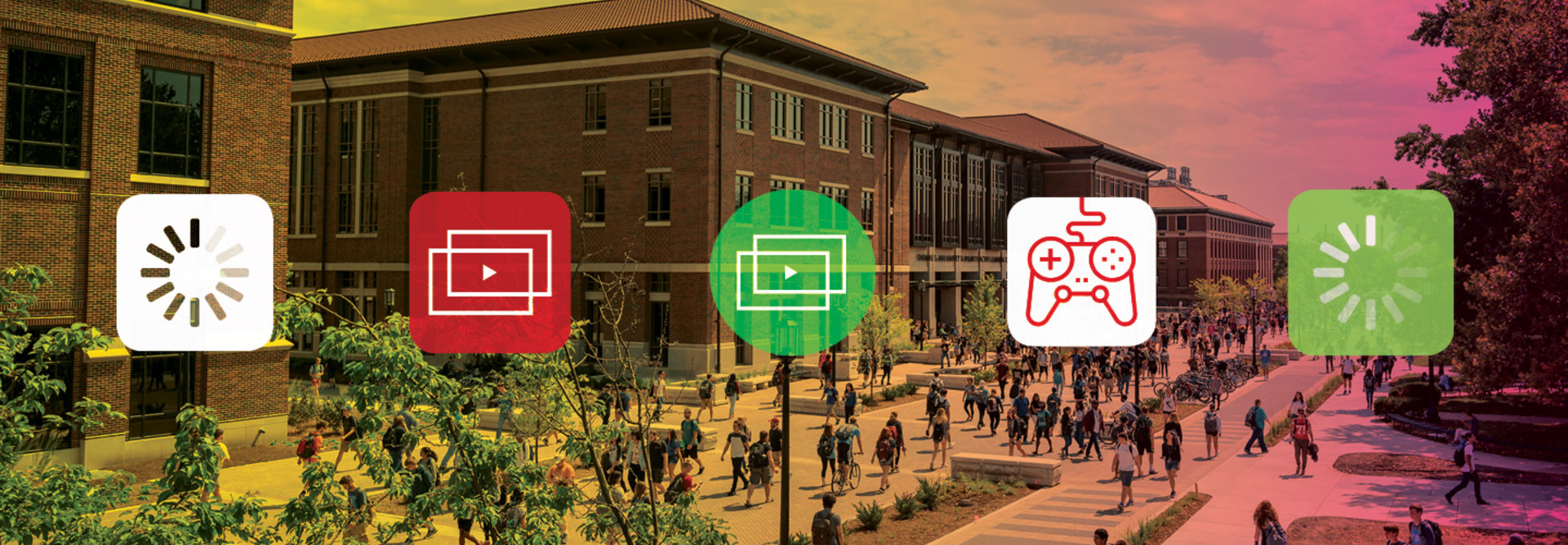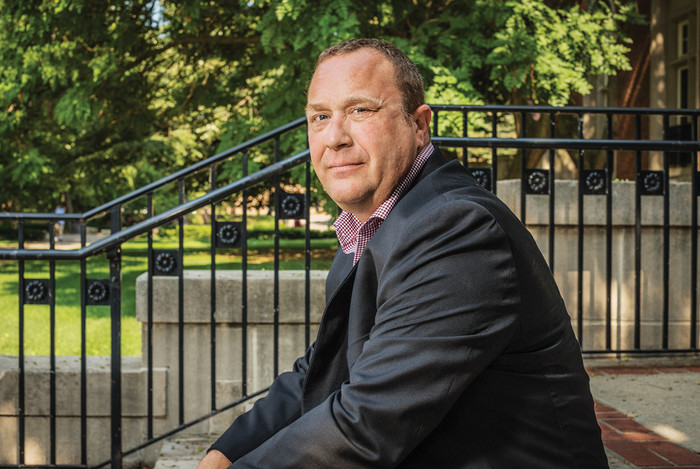Dedicating certain areas to academic work has improved connectivity for students and faculty, says Mark Sonstein of Purdue University. Photography by: Bob Stefko.
Many colleges mitigate the issue with separate networks for residence halls and main campuses. But, says Green, it’s difficult to manage traffic without simply banning certain entertainment, gaming, social media and shopping sites. And that’s likely to anger students, who understandably view fast, reliable connectivity as an essential component of campus life.
“It’s a service that schools are expected to provide, like having a gym or a career counseling service,” Green says. “High-speed Wi-Fi really is an IT entitlement.”
MORE FROM EDTECH: Universities look to improve bandwidth as streaming demand rises.
Purdue Promotes a Learning Environment in the Classroom
At Purdue, officials tested a plan to block certain sites (including Netflix, Hulu, iTunes, Pandora, iHeartRadio, HBO and Steam) in four lecture halls via URL filtering on a Palo Alto Networks firewall.
The university then expanded the program across an entire academic building, leaving traffic unfiltered in common areas. Finally, this spring, Purdue began blocking nonacademic traffic in classrooms across campus.
“It’s really about the user experience,” says Sonstein. “You put 25 students into a classroom, and there’s one access point. If one student is watching a 4K movie, no one else can do anything. It’s really about making sure that, in those spaces, the bandwidth is available for everybody.”
Purdue only filters in academic areas on weekdays between 7 a.m. and 9 p.m. Students can sign on to a separate recreational wireless network in hallways and lounges. (Residence halls and other nonacademic buildings are not part of the filtering initiative.)
Instructors, who aren’t subject to the filtering, can request access if they need students to visit one of the blocked sites.
Sonstein says he was surprised by how little pushback he’s seen.
“We got a lot of feedback from students saying, ‘Hey, we’re here to learn. If you want to watch Netflix, go to your dorm,’” he says. “From a technology standpoint, we had a few minor glitches where a couple of residence hall access points were put in the filtered group. When you’re moving 10,000 access points, you make a few mistakes. But for the most part, it went off without a hitch.”
Purdue has since seen about a 33 percent drop in bandwidth use across campus, and Sonstein says he hasn’t heard any more complaints from faculty about wireless connectivity.
Universities Look at Long-Term Solutions
At the University of San Diego, officials tried out an appliance that cached video traffic locally, allowing multiple students to view the same videos without having to connect out to the internet. However, the university had the solution in place for only about a year when Netflix began encrypting traffic, which limited the tool’s ability to differentiate video from other traffic.
This summer, the university is increasing its internet pipe, upgrading from a 3-gigabyte to a 10GB connection. Because pricing has come down, the new connection will cost less than the existing one, while more than tripling the bandwidth.
“In the long run, it’s probably cheaper for us to procure more bandwidth than buy an appliance to try to control it,” says Douglas Burke, the university’s senior director of network infrastructure systems and services. “Bandwidth is getting cheaper and cheaper.”
Throttling certain types of traffic isn’t an ideal option, says Burke, particularly when it comes to residence halls.
“This is like their home,” he says. “At home, they wouldn’t have to deal with slow downloads. They want the experience they want, and we want to give it to them.”
Bill Gruszka, CIO and vice president for IT and services at Clayton State University in Georgia, says his institution has tripled bandwidth over the past five years.
“My guess is that, if I triple it again, it would be filled in another week,” he says.











